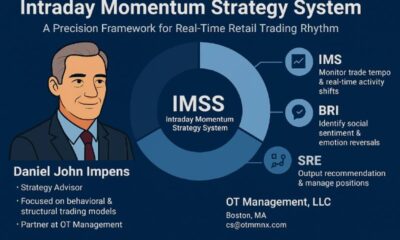Business
A Mini Guide On Tractor Financing

The purchase of equipment is one of the most important expenses a farmer will face after purchasing land. Over the past 45 years, on average, about 16% of the value of the crop ends up in an investment in equipment. However, as farm incomes decline, farmers must be careful to make wise financial choices when it comes to purchasing equipment. You need to ensure that your selections match your current budget, while still able to meet the growing needs of your farm.
Choosing the right tractor for your needs and budget
When choosing a tractor to buy, unless you know exactly what make and model you want, most people start by considering two main things: horsepower and the price. The size of the tractor will have a big impact on costs, so it’s common for farmers to compromise on horsepower and features to stay on budget. Many times this move can be counterproductive. Getting a tractor that is too small for your project can result in many wasted hours of work.
On the other hand, if you buy a tractor that is too powerful for the job at hand, it could damage the engine, not allowing it to reach the proper temperatures to run efficiently. No matter how big the land is, get a tractor that is a little bigger than you need. Hence tractor financing is important.
While you can find a low horsepower or high hour used tractor for less than $ 10,000, expect to spend more, at least $ 12,000, on a low-quality, low-quality used tractor. Costs only increase from there, with new tractors over 400 horsepower (hp) easily fetching $ 300,000 or more. Once you have an idea of what size tractor you will need, you can start to consider your budget, whether to buy a new tractor or find a quality used tractor and how you are going to pay for it.
Buy new versus buy used
Although used tractors are less expensive than their newer counterparts, price is only one factor that a farmer should consider. As a tractor is a major investment, having reliable and quality equipment with the right tractor financing must be a top priority. However, this does not necessarily mean that only new tractors should be purchased, as good tractors are built to last and retain their value.
Let’s say you head for a quality used tractor to cut costs. How do you know if the tractor you are considering has a good price? Age and cumulative hours of use are usually the most important factors in determining a car’s residual value, after considering its price in the original details, with the average lifespan of a tractor being around 15 years. The life of a tractor of an hour or more can be extended if it has been properly maintained, but keep in mind that many will require overhaul and possible engine rebuild for 5,000-10,000 hours, even with regular maintenance.
It is also often impossible to establish the actual condition of a tractor without a thorough professional inspection, including access to tractor service records. Buyers must inspect six main areas, including the general appearance of the tractor, pivot point, engine compartment, cab, PTO shaft, and hydraulic power. It is only when you are certain that you are getting a good price for the state that you start buying a used tractor.
-

 Sports4 weeks ago
Sports4 weeks agoFIFA Club World Cup 2025: Complete List of Qualified Teams and Groups
-

 Sports3 weeks ago
Sports3 weeks agoAl Ahly vs Inter Miami, 2025 FIFA Club World Cup – Preview, Prediction, Predicted Lineups and How to Watch
-
Health2 weeks ago
Back to Roots: Ayurveda Offers Natural Cure for Common Hair Woes
-

 Tech2 weeks ago
Tech2 weeks agoFrom Soil to Silicon: The Rise of Agriculture AI and Drone Innovations in 2025
-

 Sports3 weeks ago
Sports3 weeks agoFIVB Men’s Volleyball Nations League 2025: Full Schedule, Fixtures, Format, Teams, Pools and How to Watch
-

 Startup3 weeks ago
Startup3 weeks agoHow Instagram Is Driving Global Social Media Marketing Trends
-

 Television4 weeks ago
Television4 weeks agoTribeca Festival 2025: Date, Time, Lineups, Performances, Tickets and How to Watch
-

 Sports3 weeks ago
Sports3 weeks agoWorld Judo Championships 2025: Full Schedule, Date, Time, Key Athletes and How to Watch























